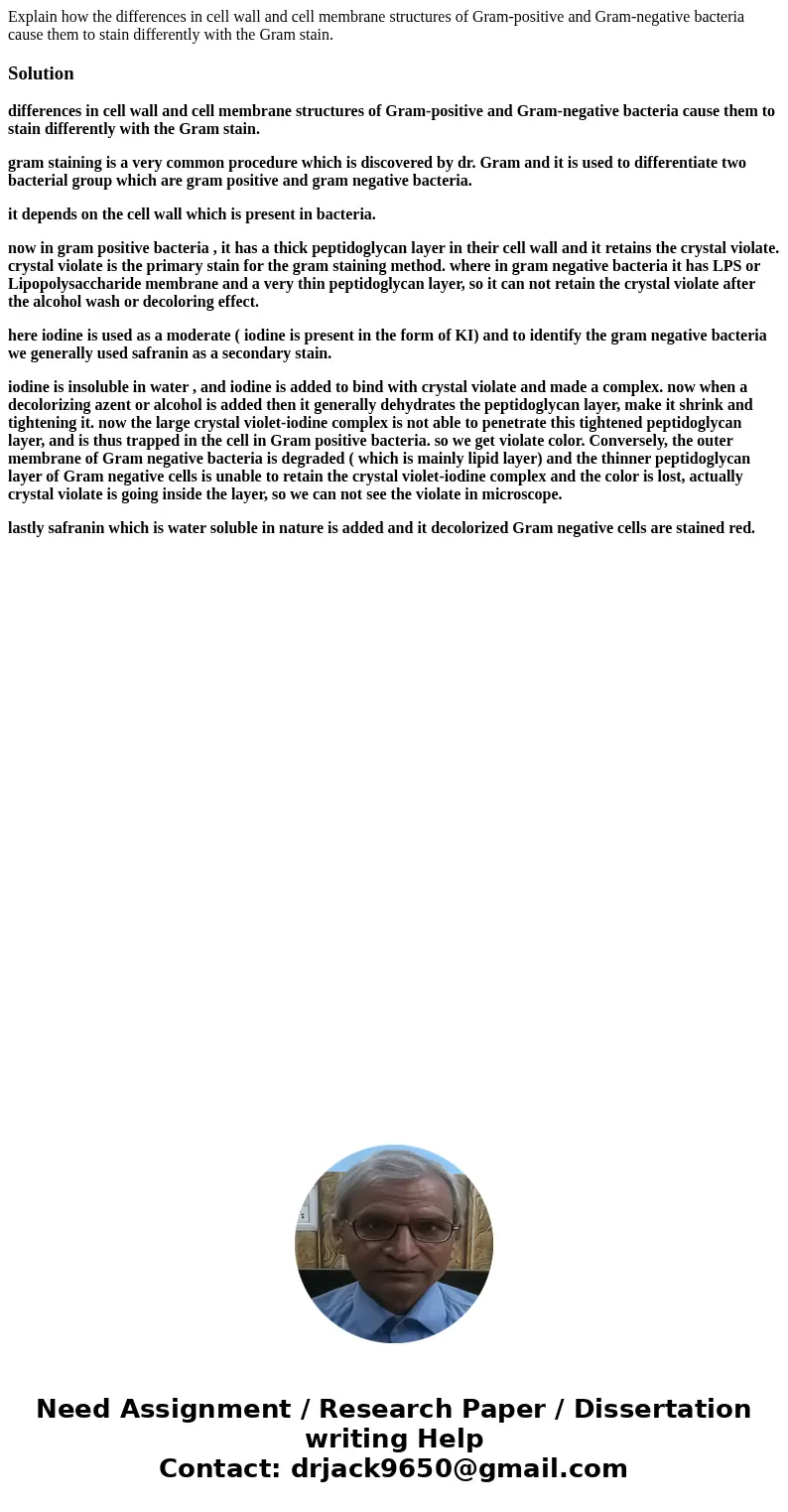Explain how the differences in cell wall and cell membrane s
Explain how the differences in cell wall and cell membrane structures of Gram-positive and Gram-negative bacteria cause them to stain differently with the Gram stain.
Solution
differences in cell wall and cell membrane structures of Gram-positive and Gram-negative bacteria cause them to stain differently with the Gram stain.
gram staining is a very common procedure which is discovered by dr. Gram and it is used to differentiate two bacterial group which are gram positive and gram negative bacteria.
it depends on the cell wall which is present in bacteria.
now in gram positive bacteria , it has a thick peptidoglycan layer in their cell wall and it retains the crystal violate. crystal violate is the primary stain for the gram staining method. where in gram negative bacteria it has LPS or Lipopolysaccharide membrane and a very thin peptidoglycan layer, so it can not retain the crystal violate after the alcohol wash or decoloring effect.
here iodine is used as a moderate ( iodine is present in the form of KI) and to identify the gram negative bacteria we generally used safranin as a secondary stain.
iodine is insoluble in water , and iodine is added to bind with crystal violate and made a complex. now when a decolorizing azent or alcohol is added then it generally dehydrates the peptidoglycan layer, make it shrink and tightening it. now the large crystal violet-iodine complex is not able to penetrate this tightened peptidoglycan layer, and is thus trapped in the cell in Gram positive bacteria. so we get violate color. Conversely, the outer membrane of Gram negative bacteria is degraded ( which is mainly lipid layer) and the thinner peptidoglycan layer of Gram negative cells is unable to retain the crystal violet-iodine complex and the color is lost, actually crystal violate is going inside the layer, so we can not see the violate in microscope.
lastly safranin which is water soluble in nature is added and it decolorized Gram negative cells are stained red.

 Homework Sourse
Homework Sourse